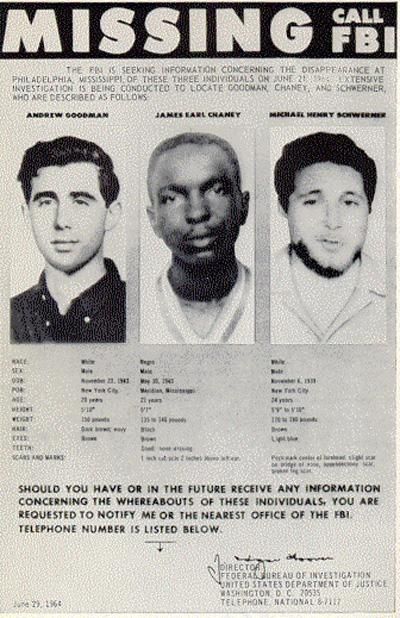The Impact of the Mississippi Burning Murders on Civil Rights Legislation
On August 4, 1964, the bodies of three young civil rights activists were discovered buried in a dam near Philadelphia, Mississippi. This incident, often referred to as the “Mississippi Burning,” became a pivotal moment in American history, galvanizing public outrage and propelling civil rights legislation forward in the United States.
Background of Freedom Summer
In June 1964, three civil rights workers—James Chaney, Andrew Goodman, and Michael Schwerner—were actively participating in “Freedom Summer,” a campaign designed to enhance voter registration among African Americans in Mississippi, where discriminatory practices had suppressed black voter turnout. At that time, fewer than 7% of eligible black citizens were registered to vote in the state.
As Julian Bond, co-founder of the Student Nonviolent Coordinating Committee (SNCC), noted, the deaths of these young men highlighted the extreme dangers faced by those working for change. “They are determined they are going to continue doing what they are doing,” Bond said, emphasizing the resolve of civil rights activists despite the threats and violence.
The Disappearance and Investigation
On June 21, 1964, Chaney, Goodman, and Schwerner were arrested by Deputy Sheriff Cecil Price while investigating the burning of a local black church, a stronghold for civil rights activism. After their arrest, they mysteriously disappeared. Local authorities initially downplayed their disappearance, but the response from the federal government was swift.
Attorney General Robert Kennedy intervened, categorizing the case as a kidnapping and deploying over 150 FBI agents to search for the men. Their investigation uncovered the bodies six weeks later, underscoring how deeply ingrained racism and violence permeated the region.
The Broader Impact on Civil Rights
The Mississippi Burning case shocked the nation, particularly white Americans who might not have previously understood the stark realities of racism. Andrew Goodman’s brother, David, recalled how the media attention generated by the case brought racial violence into the national spotlight. “This is a part of the story that’s not told that often,” he said, highlighting the impact of white victims on public perception.
The extensive media coverage led to significant political pressure, and President Lyndon Johnson used this atmosphere to push for civil rights legislation. On July 2, 1964, the Civil Rights Act was signed into law, banning discrimination and segregation in public spaces and employment.
Table: Key Events in the Mississippi Burning Case
| Date | Event |
|---|---|
| June 1964 | Freedom Summer begins to encourage voter registration |
| June 21, 1964 | Chaney, Goodman, and Schwerner are arrested and later disappear |
| August 4, 1964 | Bodies of the three men discovered |
| July 2, 1964 | Civil Rights Act signed into law |
Ongoing Legacy
The subsequent trials of those involved in the murders revealed deep-seated racial tensions and systemic issues within law enforcement. Despite the initial lack of convictions, the trials served as a catalyst for change and raised awareness about civil rights injustices.
As the families of the victims noted, the civil rights movement represented more than just the three young men who lost their lives—it symbolized the struggle of countless individuals fighting for equality. This legacy continues to influence social justice movements today, reminding us of the ongoing battle against discrimination and the importance of activism in creating lasting change.


